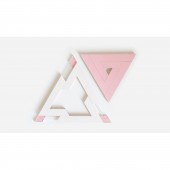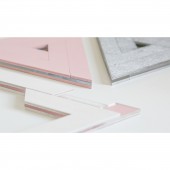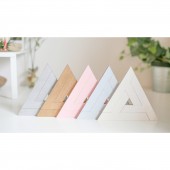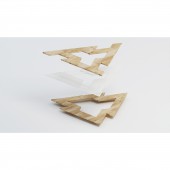Wishful Penrose Adjustable Cup Pad by Peiyi Zhao |
Home > Winners > #73755 |
| CLIENT/STUDIO/BRAND DETAILS | |
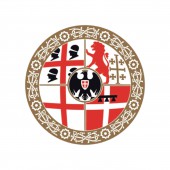 |
NAME: Accademia Albertina di Belle Arti di Torino PROFILE: The Accademia Albertina di Belle Arti ("Albertina Academy of Fine Arts") is an institution of higher education in Turin, Italy. Its precursor dated to the first half of the 17th century. In 1678 the academy was formally founded as the Academy of Painters, Sculptors and Architects (Accademia dei Pittori, Scultori e Architetti) by Marie Jeanne of Savoy. It was re-established under the name Albertina in 1883 by Charles Albert of Sardinia, who had architect Giuseppe Talucchi design and realize a new building on the former site of the convent of the Church of San Francesco da Paola. The academy witnessed the transition of artistic movements during the late 19th to early 20th century, from realism to eclecticism and the Liberty style, in the works of painters Antonio Fontanesi and Giacomo Grosso, and sculptors Vincenzo Vela and Odoardo Tabacchi. Turin became a leading centre of visual arts during the mid-20th century. The academy is home to a gallery (the Pinacoteca), which was founded to serve in the training of the academy's students. Its collection includes that donated by Mossi di Morano, the Archbishop of Casale Monferrato, in 1828, and 16th-century cartoons by Gaudenzio Ferrari and his school, which were donated by Charles Albert in 1832. The Mossi di Morano collection includes 16th–17th-century Flemish and Dutch works, 17th–18th-century Venetian paintings, and important 16th–17th-century Piemontese works including those of Defendente Ferrari and Giovanni Martino Spanzotti, among others. Notable works include Saint Ambrose and Saint Gregory, Doctors of the Church by Filippo Lippi, Ferrari's The Lamentation of Christ, Deposition in the Sepulchre by Maarten van Heemskerck, After the Battle by Cornelis de Wael, Portrait of a Gentleman, Three-Quarters View by Nicolas Lagneau, Hercules and the Nemean Lion by Ignazio Collino, and Giuseppe Pietro Bagetti's Mountainous Landscape with Coastal Inlets. The Pinacoteca has been open to the public since 1996. |
| AWARD DETAILS | |
 |
Wishful Penrose Adjustable Cup Pad by Peiyi Zhao is Winner in Bakeware, Tableware, Drinkware and Cookware Design Category, 2018 - 2019.· Press Members: Login or Register to request an exclusive interview with Peiyi Zhao. · Click here to register inorder to view the profile and other works by Peiyi Zhao. |
| SOCIAL |
| + Add to Likes / Favorites | Send to My Email | Comment | Testimonials | View Press-Release | Press Kit |


